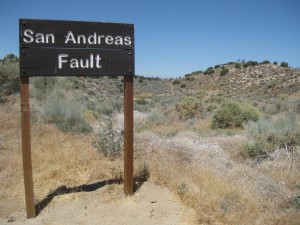View Source | August 16, 2014
 A study published in the journal Earth's Future, authored in part by former Urban Ecology IGERT fellow Nate Toké and School of Sustainability Dean Christopher Boone, was cited in several recent news articles. Both Popular Science and KQED Science covered the team's findings, which demonstrate that the population living near fault zones in the Los Angeles area is predominantly wealthy.
A study published in the journal Earth's Future, authored in part by former Urban Ecology IGERT fellow Nate Toké and School of Sustainability Dean Christopher Boone, was cited in several recent news articles. Both Popular Science and KQED Science covered the team's findings, which demonstrate that the population living near fault zones in the Los Angeles area is predominantly wealthy.
This is significant because close proximity to environmental hazards typically dictates lower property values, meaning poor populations are commonly the most socially vulnerable. In examining why wealthy individuals would choose to live in high-risk locations, the team found that a 1971 zoning act forbidding construction on fault lines inadvertently encouraged green belts to flourish. The attractive vegetation outweighed the dangers posed by potential earthquakes, and wealthy individuals began to build homes near these areas.
According to Toké, "One of the most important observations from this study is that the distribution of high social vulnerability is more strongly tied to the absence of the amenity of parks and greenspace than to natural hazards.”

